The 1885 Morgan Silver Dollar’s value ranges from $440 to over $7,779 depending on condition and mint mark. The rare 1885-CC (Carson City) is most valuable due to limited mintage of 228,000 coins. Circulated coins grade F-12 worth $625-$700, while uncirculated examples command premium prices: MS-63 ($875-$1,000), MS-65 ($1,549), and MS-67 ($7,779+). Value factors include coin grade, mint mark (CC, O, S, or no mark), and minting errors like “Doubled Dash” varieties. The Carson City mint mark significantly increases value compared to other 1885 Morgan dollars, making professionally graded specimens highly sought after by collectors.
The 1885 Morgan silver dollar stands as one of the most fascinating years in the series, with dramatic value differences depending on where it was minted. While a common Philadelphia issue might trade near silver melt value in worn condition, the Carson City version regularly commands over $600 even in circulated grades, with pristine specimens reaching $7,779. Understanding which mint mark you have—or don’t have—makes all the difference between pocket change and a serious numismatic asset.
Why the 1885 Morgan Dollar Deserves Your Attention
The 1885 production year presents an unusual situation among Morgan dollars. The Philadelphia Mint struck over 17 million pieces, making no-mint-mark examples extremely common. New Orleans added another 9 million, and San Francisco contributed 1.5 million. Yet Carson City produced just 228,000 coins before shutting down operations later that year, creating the scarcity that drives today’s premium prices.
This combination of abundant common dates and one genuinely scarce variety makes 1885 an educational year for collectors. You can acquire a presentable example for under $30, or chase high-grade Carson City specimens that rival mortgage payments. The coin’s 90% silver content provides an intrinsic value floor of approximately $18-$22 based on current silver spot prices around $24 per ounce, but numismatic premiums quickly exceed melt value for anything beyond heavily worn pieces.
1885-CC Morgan Dollar: The Carson City Premium
The Carson City Mint operated in Nevada’s silver mining territory from 1870 to 1893, with several production gaps. The 1885-CC represents one of the lower mintage years before the facility’s temporary closure, making it a key date that serious collectors actively pursue.
1885-CC Value by Grade:
| Grade | Estimated Value | Market Notes |
|---|---|---|
| Good (G-4) | $440-$475 | Heavy wear, details readable |
| Fine (F-12) | $625-$700 | Moderate wear, clear features |
| Extremely Fine (EF-40) | $725-$825 | Light wear on high points |
| About Uncirculated (AU-50) | $850-$975 | Minimal circulation wear |
| Mint State (MS-60) | $1,400-$1,550 | Uncirculated with bag marks |
| MS-63 | $875-$1,025 | Better luster, fewer marks |
| MS-64 | $1,059-$1,200 | Strong eye appeal |
| MS-65 | $1,549-$1,750 | Gem quality, limited marks |
| MS-66 | $2,395-$2,650 | Premium quality |
| MS-67 | $7,779-$9,500 | Exceptional specimens |
The survival rate for 1885-CC dollars in mint state condition remains relatively favorable compared to earlier Carson City issues. Treasury Department releases in the 1960s returned thousands of uncirculated examples to the market, which explains why MS-63 and MS-64 coins can sometimes be found for less than lower mint state grades—market timing and dealer inventory affect short-term pricing. According to NGC census data, the population peaks around MS-64, with significant drop-offs at MS-66 and above where eye appeal and strike quality become critical factors.
PCGS and NGC certification adds significant value to 1885-CC dollars, particularly in grades MS-65 and higher where authentication prevents costly mistakes. A Heritage Auctions sale in January 2023 realized $8,400 for an MS-67 example with exceptional toning, demonstrating how premium quality commands strong prices even when population reports show dozens of similar-grade coins.
1885-O Morgan Dollar: The New Orleans Issue
The New Orleans Mint produced 9,185,000 Morgan dollars in 1885, marked with a small “O” mint mark on the reverse below the eagle. This substantial mintage makes the 1885-O one of the most affordable Morgan dollars in circulated grades, though mint state examples with strong strikes command respectable premiums.
1885-O Value Guide:
| Grade | Typical Value Range |
|---|---|
| Good to Very Good (G-4 to VG-8) | $28-$32 |
| Fine to Very Fine (F-12 to VF-20) | $32-$38 |
| Extremely Fine (EF-40) | $40-$48 |
| About Uncirculated (AU-50/55) | $52-$65 |
| MS-60 to MS-62 | $68-$85 |
| MS-63 | $95-$125 |
| MS-64 | $165-$225 |
| MS-65 | $525-$750 |
| MS-66 | $1,850-$2,400 |
| MS-67 | $8,500-$12,000 |
New Orleans Morgan dollars frequently show weaker strikes than their Philadelphia and San Francisco counterparts, particularly on the eagle’s breast feathers and the hair details above Liberty’s ear. This striking characteristic means that finding a fully struck 1885-O with complete feather definition and strong cheek details commands premium prices even within the same technical grade. Stack’s Bowers sold an MS-66+ example with exceptional strike quality for $3,120 in August 2022, nearly double the typical MS-66 value.
The 1885-O also appears with varying luster qualities. Some examples display frosty, satiny surfaces while others show more reflective, semi-prooflike characteristics. Deeply mirrored prooflike (DMPL) specimens are scarce and can bring 3-5 times the value of standard mint state coins in equivalent grades.
1885-S Morgan Dollar: San Francisco Scarcity
San Francisco struck 1,497,000 Morgan dollars in 1885, marked with an “S” mint mark. While not as rare as the Carson City issue, the 1885-S qualifies as semi-key date with significantly lower mintage than Philadelphia or New Orleans production. Circulated examples trade at modest premiums, but mint state pieces—especially with gem surfaces—bring substantial values.
1885-S Pricing Structure:
| Grade | Market Value |
|---|---|
| Good (G-4) | $32-$38 |
| Very Good (VG-8) | $35-$42 |
| Fine (F-12) | $38-$45 |
| Very Fine (VF-20) | $42-$52 |
| EF-40 | $55-$68 |
| AU-50 | $75-$95 |
| MS-60 | $145-$180 |
| MS-63 | $265-$350 |
| MS-64 | $625-$825 |
| MS-65 | $2,100-$2,850 |
| MS-66 | $7,500-$11,000 |
| MS-67 | $35,000-$48,000 |
The 1885-S becomes genuinely scarce in grades above MS-64. PCGS has certified fewer than 200 examples in MS-66, and MS-67 specimens remain exceedingly rare with fewer than 20 certified across both major grading services combined. A PCGS MS-67 sold through Legend Rare Coin Auctions for $47,000 in March 2023, reflecting strong demand for condition rarities in this date.
San Francisco Morgan dollars typically exhibit sharp strikes with well-defined details, making the 1885-S particularly attractive when found in higher grades. The luster quality tends toward bright, frosty surfaces rather than the deeper, more satiny appearance common to New Orleans issues.
1885 Morgan Dollar (No Mint Mark): Philadelphia Production
The Philadelphia Mint produced 17,787,000 Morgan dollars in 1885 without any mint mark—the absence of a letter below the eagle indicates Philadelphia origin. This massive mintage makes the standard 1885 Morgan dollar one of the most common dates in the entire series, ideal for beginning collectors or those assembling type sets on modest budgets.
1885 Philadelphia Value Overview:
| Grade | Expected Value |
|---|---|
| Good to Very Good | $26-$30 |
| Fine to Very Fine | $30-$36 |
| EF-40 | $38-$45 |
| AU-50/55 | $48-$58 |
| MS-60/62 | $62-$75 |
| MS-63 | $78-$95 |
| MS-64 | $105-$145 |
| MS-65 | $215-$295 |
| MS-66 | $625-$875 |
| MS-67 | $3,200-$4,800 |
Despite the high mintage, locating truly gem-quality examples with outstanding eye appeal remains challenging. Most 1885 Philadelphia dollars show typical bag marks from storage in mint bags where thousands of coins jostled together for decades. The Treasury releases of the 1960s brought vast quantities to market, but truly choice specimens with minimal contact marks and strong original luster still command premiums.
The 1885 no-mint-mark variety serves an important role for collectors seeking affordable Morgan dollars in uncirculated condition. Where other dates might require hundreds or thousands of dollars for MS-65 quality, the 1885 provides an accessible option that displays the same design beauty and silver content without the rarity premium.
Valuable Errors and Varieties to Check
Beyond standard mint mark variations, several 1885 Morgan dollar errors and die varieties add significant collector interest and value. These manufacturing anomalies occurred during the minting process and create unique characteristics that specialists actively seek.
Doubled Die Varieties: The 1885-O Doubled Dash variety shows doubling on the horizontal dash between the designer’s initial “M” (for George T. Morgan) and the ribbon on the reverse. This variety typically adds $50-$150 to values in circulated grades and considerably more in mint state. Look for clear separation on the dash using 5x magnification.
VAM Varieties: The extensive VAM (Van Allen-Mallis) catalog documents dozens of 1885 die varieties across all mint marks. Notable examples include:
- VAM-6 (1885-CC): Doubled 1 and 8 in date, worth $75-$200 premium in MS grades
- VAM-14 (1885-O): Pitted Reverse, adding $35-$85 in mint state
- VAM-1A (1885-S): Clashed Obverse E, premium $50-$125
Off-Center Strikes: Genuine off-center errors on Morgan dollars are scarce since quality control caught most before release. A 5-10% off-center 1885 Morgan might bring $500-$1,200 depending on date visibility and centering drama. More dramatic 15-25% off-center examples can reach $2,000-$4,500 at auction.
Die Cracks and Cuds: Major die breaks creating raised bumps (cuds) on the coin’s surface add modest collector interest. A significant cud on an 1885-O might add $45-$150 to standard values, while dramatic examples affecting major design elements can bring higher premiums.
Wrong Planchet Errors: Exceptionally rare, an 1885 Morgan struck on a foreign planchet or different denomination would represent a major error worth thousands. No confirmed examples exist in mainstream populations, but experimental strikings occasionally surface.
Authentication through PCGS or NGC becomes essential when purchasing alleged error coins, as alterations and post-mint damage can mimic genuine varieties. The additional certification cost of $35-$75 protects against expensive mistakes on claimed rarities.
Grading Factors That Determine Final Value
Understanding how professionals grade Morgan dollars helps collectors assess their own coins and make informed purchasing decisions. The Sheldon scale from 1 to 70 provides the standard, with key threshold points dramatically affecting value.
For circulated 1885 Morgan dollars, examine these areas for wear: Liberty’s cheek and hair above the forehead show the first signs of friction. On the reverse, check the eagle’s breast feathers—these details flatten quickly with handling. A Fine (F-12) coin shows moderate overall wear but maintains all major design elements. Very Fine (VF-20) exhibits less wear with approximately half the original detail in hair and feathers remaining. Extremely Fine (EF-40) shows only slight wear on the highest points with most details sharp.
The About Uncirculated (AU-50 to AU-58) range represents coins with minimal circulation wear, often just light friction on the highest points. These frequently offer excellent value as they display much of the visual appeal of mint state coins at substantially lower prices. An AU-55 1885-O at $60 provides far more coin than a heavily marked MS-62 at $80.
Mint State grading from MS-60 to MS-70 focuses on surface preservation, strike quality, luster, and eye appeal rather than wear. MS-60 to MS-62 coins show numerous contact marks and may have subdued luster. MS-63 represents the entry point for “choice” uncirculated with better overall appearance. MS-64 displays above-average quality with limited distracting marks. MS-65 “gem” coins show minimal marks visible to the naked eye and strong luster. MS-66 and above require exceptional surfaces, full strikes, and outstanding eye appeal.
Toning affects value in complex ways. Natural, attractive album toning in shades of gold, blue, and russet can add 20-50% to values, while unattractive dark or splotchy toning may reduce prices by 15-30%. Bright white coins appeal to some collectors but others question whether cleaning removed original surfaces. PCGS and NGC designate particularly attractive toning with special labels that command premiums.
Building Your 1885 Morgan Dollar Collection
Approaching 1885 Morgan dollars strategically helps collectors maximize value while enjoying the hobby. Start with a solid no-mint-mark example in MS-63 or MS-64 grade for under $100, establishing the basic design in attractive uncirculated condition. This provides a reference point for comparing other dates and mint marks.
Next, consider adding circulated examples of the three branch mint issues. An Extremely Fine 1885-O at $45 and 1885-S at $65 provide affordable exposure to these facilities without the premium of mint state coins. This brings your basic 1885 set to four coins for approximately $250-$300, representing all production facilities that year.
For collectors with larger budgets, upgrading to mint state examples of the scarcer issues makes sense. An MS-63 1885-S at $300-$350 provides significant eye appeal, while an MS-64 1885-CC at $1,100-$1,200 delivers a key date in choice condition. This premium approach creates a complete 1885 set worth $1,800-$2,000 that should appreciate steadily.
Specialized collectors might focus on CAC-approved examples (Certified Acceptance Corporation stickers indicate premium quality for the grade), prooflike varieties, or specific VAM numbers. These niches offer collecting depth beyond the standard four-coin date set.
Purchase certified coins when spending over $200 on individual pieces. PCGS and NGC authentication protects against counterfeits, provides consistent grading, and enhances resale liquidity. Raw coins under $100 present acceptable risk if purchased from established dealers, but examine them carefully for signs of cleaning, harsh polishing, or artificial toning.
Investment Potential and Market Outlook
The 1885 Morgan dollar market shows several trends worth monitoring. Common-date coins in typical uncirculated grades (MS-63 to MS-64) have remained relatively stable over the past decade, with prices tracking silver spot values plus modest numismatic premiums. The 1885 and 1885-O fall into this category, making them primarily collectible rather than investment pieces unless purchased in exceptional grades.
Carson City issues including the 1885-CC demonstrate stronger appreciation, particularly in grades MS-65 and above. The combination of Carson City collecting popularity and genuine scarcity in gem grades supports premium pricing. Values for MS-65 examples have increased approximately 35-45% since 2018 according to PCGS price guide data, outpacing common Morgan dollars significantly.
The 1885-S presents interesting potential in MS-65 and higher grades where populations remain tight. As more collectors recognize the genuine scarcity of gem San Francisco Morgans from the 1880s, demand pressure may support continued appreciation. Current pricing around $2,500 for MS-65 examples appears reasonable given the survival rate of perhaps 300-400 pieces in this grade.
Several market factors support long-term Morgan dollar values: the fixed survival population (no new coins will ever be minted), growing international collector interest particularly from Asia, and the historical significance of these silver dollars from America’s westward expansion era. Silver content provides downside protection, though numismatic premiums vastly exceed melt value for anything beyond cull-grade pieces.
Conversely, the market faces challenges from demographic shifts as the traditional Morgan dollar collector base ages. Younger collectors often gravitate toward modern coins, creating uncertainty about long-term demand. Additionally, the discovery of any significant Treasury hoards—though increasingly unlikely—could impact certain dates if thousands of uncirculated pieces entered the market.
Smart Buying Strategies for Maximum Value
Timing your purchases strategically can save 15-25% compared to impulse buying. Major coin shows like the ANA World’s Fair of Money in August or the Florida United Numismatists convention in January bring hundreds of dealers together, creating competitive pricing pressure. Dealers often reduce prices late Sunday afternoon as they prefer selling to packing and shipping inventory home.
Online auctions through Heritage, Stack’s Bowers, and Great Collections provide transparent pricing where you can see exactly what coins actually sell for rather than asking prices. Review past auction results for your target date and grade to establish realistic value ranges. Factor in the buyer’s premium (typically 17-20%) when calculating your maximum bid.
Building relationships with established dealers yields long-term benefits. Repeat customers often receive first opportunity on fresh acquisitions and more favorable pricing than walk-in buyers. Be clear about your collecting goals and budget parameters—knowledgeable dealers can alert you to opportunities matching your interests.
Submit valuable raw coins for certification when planning to sell or when authenticity questions exist. The grading fee of $35-$75 per coin pays for itself on anything worth over $300 by providing third-party validation that increases buyer confidence and marketability. PCGS and NGC both offer regular submission tiers with 30-day turnaround times.
Avoid common mistakes like paying gem premiums for scratched or spotted coins, buying cleaned pieces at uncleaned prices, or overpaying for common dates in average grades. When examining coins, use proper 5x to 10x magnification in good lighting—hairlines from cleaning and small surface issues become obvious under magnification that might not be visible to the naked eye.
Authentication and Counterfeeit Detection
The popularity and value of Morgan dollars, particularly scarce dates like the 1885-CC, make them targets for counterfeiters. Modern Chinese-manufactured fakes have become increasingly sophisticated, requiring careful examination to detect. Several techniques help identify genuine coins.
Weight provides the first checkpoint—authentic Morgan dollars weigh 26.73 grams. A variance of more than 0.2 grams in either direction indicates problems. Digital pocket scales accurate to 0.01 grams cost under $20 and should be part of every collector’s toolkit. Many counterfeits weigh 25-26 grams, noticeably light when checked carefully.
Ring test validation works for raw coins: balance the dollar on your fingertip and tap the edge with another coin. Authentic silver produces a clear, sustained ring lasting 10-15 seconds. Counterfeits typically produce a dull thud or brief tone due to different metal composition. This test requires practice and won’t work with certified slabs.
Examine edge reeding carefully—genuine Morgan dollars have consistent, sharp reeding from the collar die. Counterfeit reeding often appears softer, irregular, or lacks the crispness of authentic examples. Compare suspected coins side-by-side with known genuine pieces to spot differences.
Study diagnostics for your specific date and mint mark. The 1885-CC, for example, should show specific die characteristics like slightly repunched mint marks on certain die marriages. Counterfeiters often miss these subtle details when creating dies. VAM resources and high-resolution images from PCGS CoinFacts help you learn diagnostic features.
When buying expensive raw Morgan dollars, insist on a written money-back guarantee from the seller. Reputable dealers stand behind their merchandise and will refund purchases that fail authentication. Submit high-value raw purchases to PCGS or NGC immediately—if the coin fails authentication, return it promptly for refund.
Where to Buy and Sell 1885 Morgan Dollars
Multiple marketplace options exist for acquiring and selling Morgan dollars, each with distinct advantages. Local coin shops provide immediate gratification and face-to-face examination before purchase. Building relationships with shop owners can yield notifications about fresh estate purchases before coins hit display cases. Expect to pay retail prices but receive the benefit of personal service and return privileges.
Online retailers like APMEX, JM Bullion, and Modern Coin Mart offer extensive inventories with competitive pricing on common dates. Their high-volume business model provides lower margins than local shops on generic material. Check return policies carefully—most allow 7-14 days for returns but require coins remain in original packaging.
Auction houses including Heritage, Stack’s Bowers, and Great Collections handle higher-end material with detailed descriptions and images. Buyer’s premiums add 17-20% to hammer prices, but the competitive bidding environment often produces fair market prices. Auction results become part of the permanent record, establishing provenance for significant coins.
eBay presents opportunities for patient searchers willing to sort through mislabeled and overpriced listings. Use advanced search filters to find recently sold listings for realistic pricing data. Exercise caution regarding counterfeit coins and altered pieces—insist on certified examples when spending over $100, and utilize eBay’s money-back guarantee on any questionable purchases.
When selling Morgan dollars, get multiple quotes before committing. Different dealers specialize in different areas—one might aggressively pursue Carson City issues while another focuses on high-grade common dates. Certified coins in MS-65 and above grades typically bring the best percentages of retail value when sold, often 80-90% through auction or to specialized dealers. Raw circulated common dates typically bring 50-65% of retail, with actual percentages depending on individual coin appeal and dealer inventory needs.
Consider consigning valuable pieces to auction rather than selling outright. The 10-15% seller’s commission gets offset by achieving stronger prices through competitive bidding, particularly for key dates in premium grades. Heritage and Stack’s Bowers require minimums of $500-$1,000 per coin for standard auctions, while Great Collections accepts coins valued at $100+.
Advanced Collecting: Prooflike and DMPL Examples
Beyond standard business strikes, some 1885 Morgan dollars exhibit prooflike (PL) or deep mirror prooflike (DMPL) surface characteristics created by fresh dies producing reflective fields. These special finish coins command substantial premiums, particularly when combined with high grades.
PCGS and NGC designate prooflike when fields show reflectivity of at least 4-5 inches when measured by the Numismatic Guaranty Corporation’s official light source. Deep mirror prooflike requires 8+ inches of reflectivity with deeply mirrored, watery fields that contrast strongly with frosted devices. These coins resemble proof specimens but were struck for circulation on standard planchets.
For 1885 no-mint-mark dollars, prooflike examples in MS-64 bring $300-$450 compared to $105-$145 for standard finish. DMPL specimens command even higher premiums—an MS-64 DMPL might reach $800-$1,100. The 1885-O appears prooflike less frequently than Philadelphia issues, with MS-64 PL examples worth $450-$650 and DMPL pieces reaching $1,500-$2,200.
San Francisco produced fewer prooflike 1885 dollars than other mints that year. An 1885-S in MS-64 PL brings $2,500-$3,500, while DMPL examples exceed $5,000 in the same grade due to extreme rarity. The combination of semi-key date status and special surface characteristics creates strong collector demand.
Carson City prooflike 1885 dollars are scarce, with DMPL examples especially rare. An MS-64 DMPL 1885-CC might bring $4,500-$6,500 compared to $1,100 for standard finish. Populations remain small—PCGS has certified fewer than 50 examples in DMPL across all grades.
Collecting prooflike Morgan dollars creates a specialized niche requiring larger budgets but offering coins with exceptional eye appeal. The mirrored surfaces display the design with unusual clarity, particularly when devices show strong frost contrast. This finish category deserves consideration for collectors seeking something beyond standard uncirculated examples.
Historical Context and Design Elements
Understanding the historical background enriches Morgan dollar collecting beyond simple value considerations. The Bland-Allison Act of 1878 mandated Treasury purchase and coinage of large quantities of domestically mined silver, creating political compromise between silver mining interests and sound money advocates. The Morgan dollar emerged as the vehicle for this required silver coinage.
George T. Morgan, an English immigrant working as Assistant Engraver at the Philadelphia Mint, created the design featuring Lady Liberty based on Philadelphia schoolteacher Anna Willess Williams who posed for Morgan’s sketches. The reverse depicts an eagle clutching arrows and an olive branch, surrounded by a wreath—powerful symbolism of America’s strength and peace-seeking nature.
By 1885, Morgan dollar production had become routine at all four operating mints. Carson City’s 1885 production of just 228,000 pieces reflected declining operations at the Nevada facility, which would suspend coining operations entirely later that year due to depleted Comstock Lode silver supplies. The mint reopened briefly from 1889-1893 before closing permanently, making all “CC” mint marks collectible.
Technical specifications include 90% silver and 10% copper composition, 38.1mm diameter, 2.4mm thickness, and 26.73 grams weight. The coins contain 0.77344 troy ounces of pure silver—at $24 spot silver prices, melt value approximates $18.56. This intrinsic value provides downside protection even for damaged or cull-grade pieces.
The Morgan dollar remained in production through 1904, resumed briefly in 1921, and was honored with special 2021 centennial issues. The original 1878-1904 and 1921 coins represent Victorian-era American coinage at its finest, with substantial size and silver content that modern coins lack.
Your Next Steps in Morgan Dollar Collecting
Start by examining any 1885 Morgan dollars currently in your possession with fresh perspective. Check the reverse carefully for mint marks—the small letter below the eagle determines whether you own a common Philadelphia piece worth $35 or a Carson City key date worth $600+. Use proper magnification to examine surfaces for valuable varieties like doubled dies or significant die cracks.
Research current market values through PCGS and NGC price guides before making major purchases. These regularly updated resources reflect actual market transactions rather than optimistic asking prices. Cross-reference with completed eBay sales and recent auction results for additional data points supporting informed decisions.
Consider joining the American Numismatic Association or local coin clubs to connect with experienced collectors who can share knowledge and help you avoid expensive mistakes. Club meetings provide opportunities to examine quality examples and learn proper grading techniques through hands-on experience with members’ coins.
Set realistic collecting goals based on your budget and interests. A complete 1885 set across all four production facilities makes an achievable objective whether you pursue circulated examples under $1,000 total or gem mint state pieces approaching $10,000. Define your target grades and work systematically toward completion rather than buying randomly.
Most importantly, handle your Morgan dollars with care to preserve their condition for future generations. Use cotton gloves when examining uncertified pieces, store them in proper holders designed for coin preservation, and maintain consistent temperature and humidity to prevent toning acceleration or environmental damage. These classic American silver dollars deserve respect as historical artifacts that have survived 138+ years to reach your collection.
You may be interested:
- 1859 Indian Head Penny Coin Value Complete Errors List And No Mint Mark Worth Guide For Collectors
- 1911 V Nickel Coin Value Guide Complete Errors List And No Mint Mark Worth Today
- 1902 Dime Coin Value Complete Errors List With O S And No Mint Mark Worth Guide
- 1788 Quarter Coin Value Complete Guide Errors List And D S P Mint Mark Worth Revealed
- 1776 To 1976 Bicentennial Half Dollar Coin Value Complete Errors List And What Your D S And No Mint Mark Coins Are Actually Worth
- 1990 Penny Coin Value Errors List How D S And No Mint Mark Pennies Are Worth Thousands Of Dollars

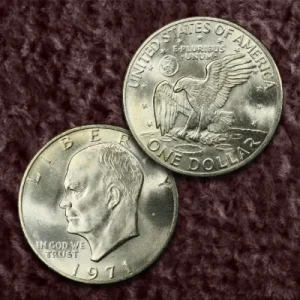
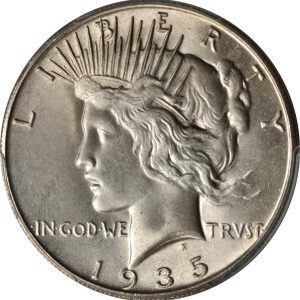
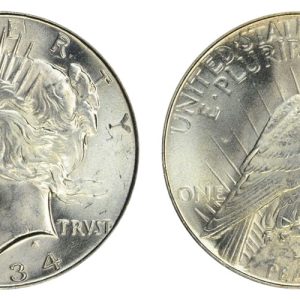
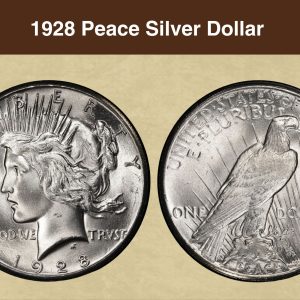
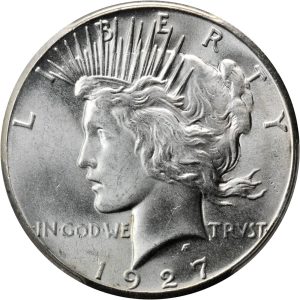
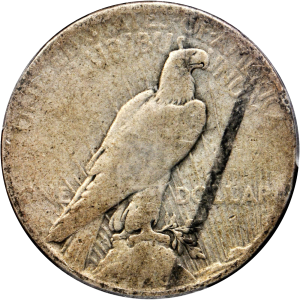
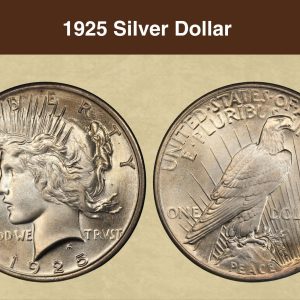
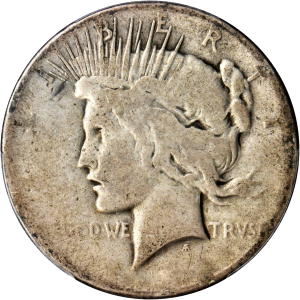
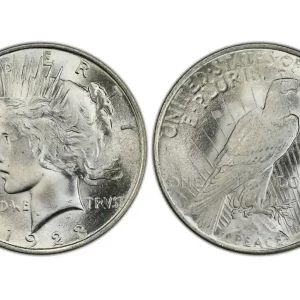
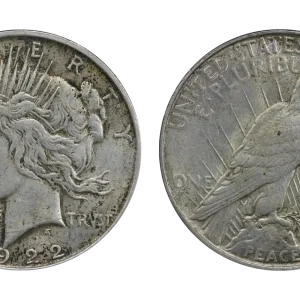
How much is a 1885 CC Morgan Dollar worth?
The value of an 1885-CC Morgan silver dollar varies significantly based on its condition (grade), ranging from approximately $440 in lower circulated grades to well over $7,000 for uncirculated coins. For example, a “Fine” (F-12) grade is worth about $625-$700, while a Mint State (MS-65) coin can be valued around $1,549, and higher grades like MS-67 are worth $7,779 or more. The 1885-CC is a sought-after coin due to its low mintage from the Carson City Mint.
Which CC Morgan Dollar is most valuable?
The most valuable “CC” Morgan dollar is the 1889-CC, due to its extremely low survival rate in high grades, making it one of the rarest Morgan dollars overall. While other “CC” dates like the 1885-CC are rare, the 1889-CC is considered the king of Carson City coins, particularly in Mint State.
What makes a 1885-o silver dollar rare?
Low Mintage The 1885-O Morgan Dollar had a mintage of just 2,000,000 coins, which was relatively low for the time.
What does CC mean on 1885 silver dollar?
The New Orleans Mint began striking the new silver dollars in 1879. The Denver Mint, established in 1906, struck the coins for only one year, in 1921. The mint marks appearing on the coins are none, representing Philadelphia, “CC” for Carson City, “S” for San Francisco, “O” for New Orleans and “D” for Denver.